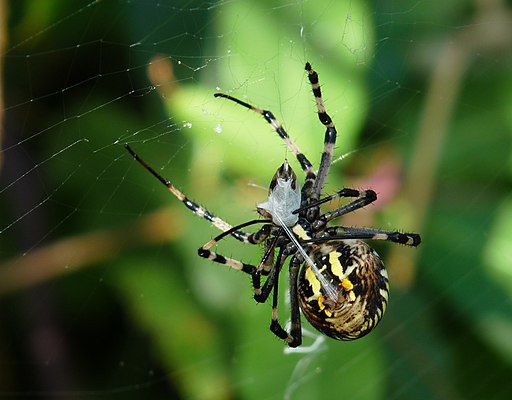
Spider silk is a protein fiber spun from spiders to make webs. Silk is renowned for it’s high tensile strength that is equivalent to that of steel (weight for weight). On a macroscopic level, silk is often found as gossamer fibers. A closer look at the protein structure reveals a repetitive block structure consisting of β-sheets.

The primary amino acid sequence contains blocks of Alanine and Glycine. the antiparallel strands assemble so the -C=O from one amino acid residue hydrogen bonds with the -N-H of the opposite strand. Individually, H-bonds are weak, but assembled in bulk, they provide a strength and flexibility that has been utilized in fine textiles for centuries.
A new article has been published in the journal Physical Review Letters describing a new method of obtaining large quantities of spider silk to generate musical cordage. Traditionally, violin strings were made from fibers obtained from animal (cattle) intestines and known as catgut. Newer instruments often replace catgut strings with steel, nylon and polymer strings. With this came differences in the quality of sound but enhanced resilience. Spider silk strings also provide a slightly different sound quality with reduced resilience compared to synthetic cordage but outlast catgut. Some professional violinists have been quoted as enjoying the sound quality of the spider silk strings.





Wow, I did not know that pesky sprider webs can be used in creating instruments especially one as gentle as a violin.